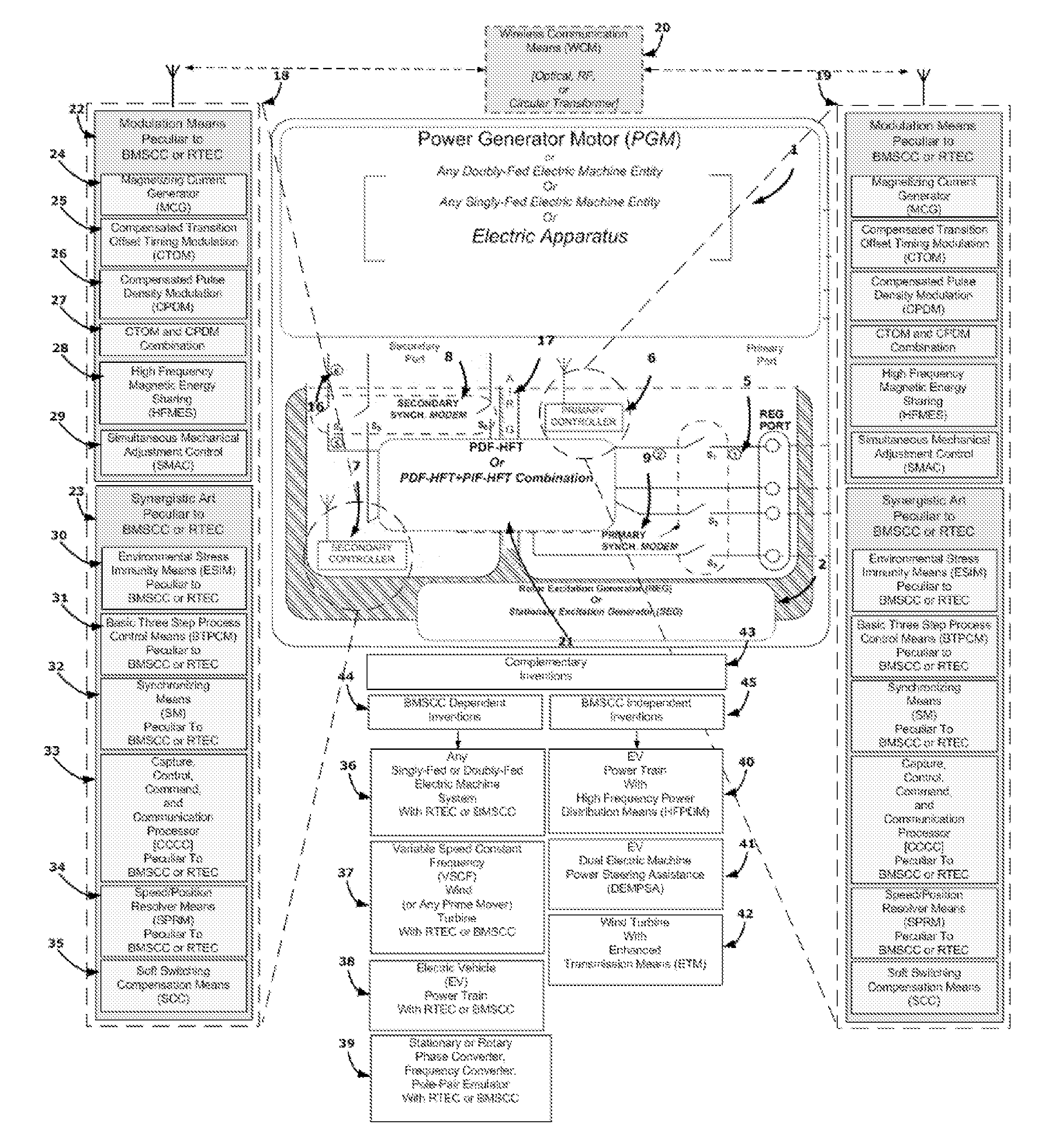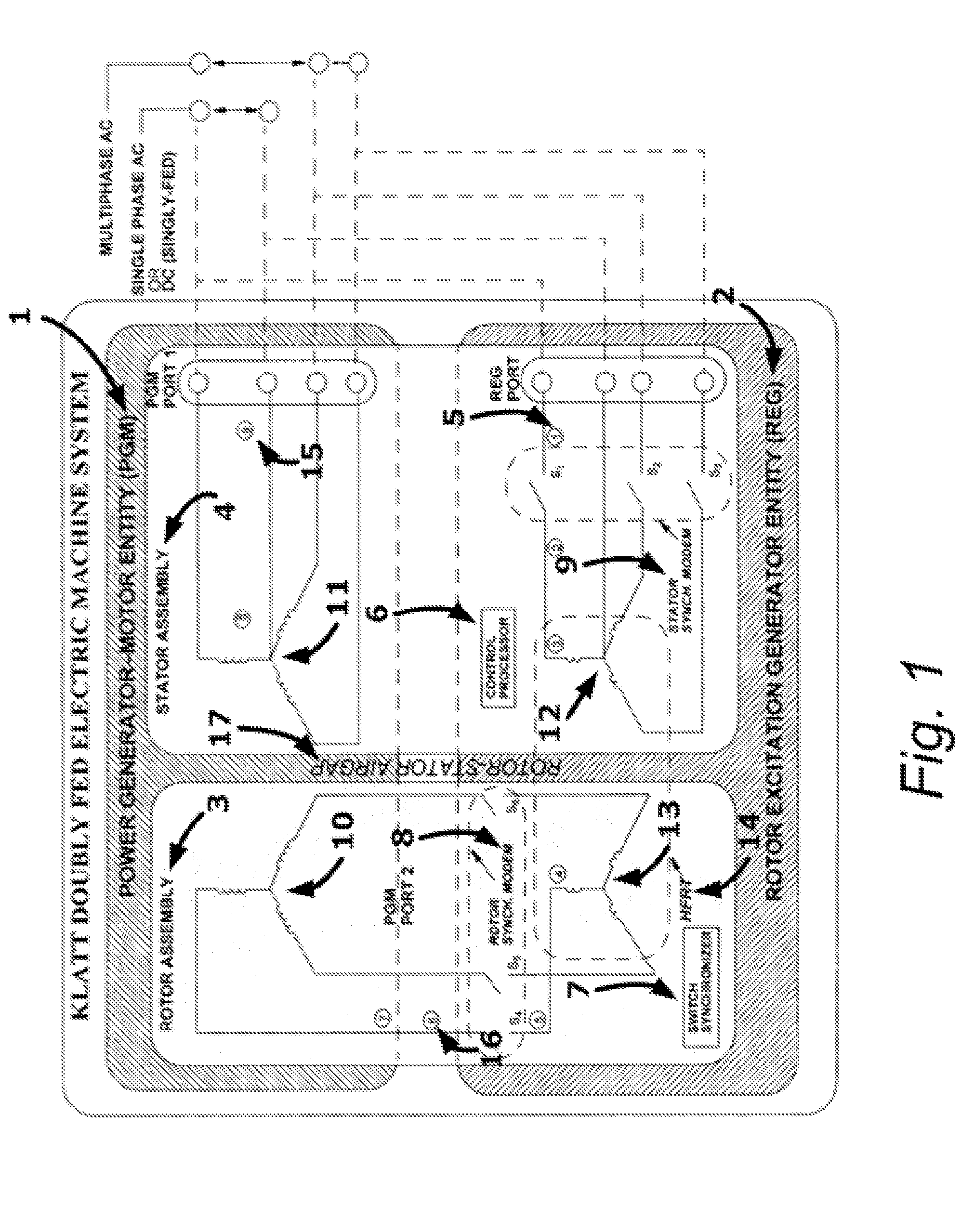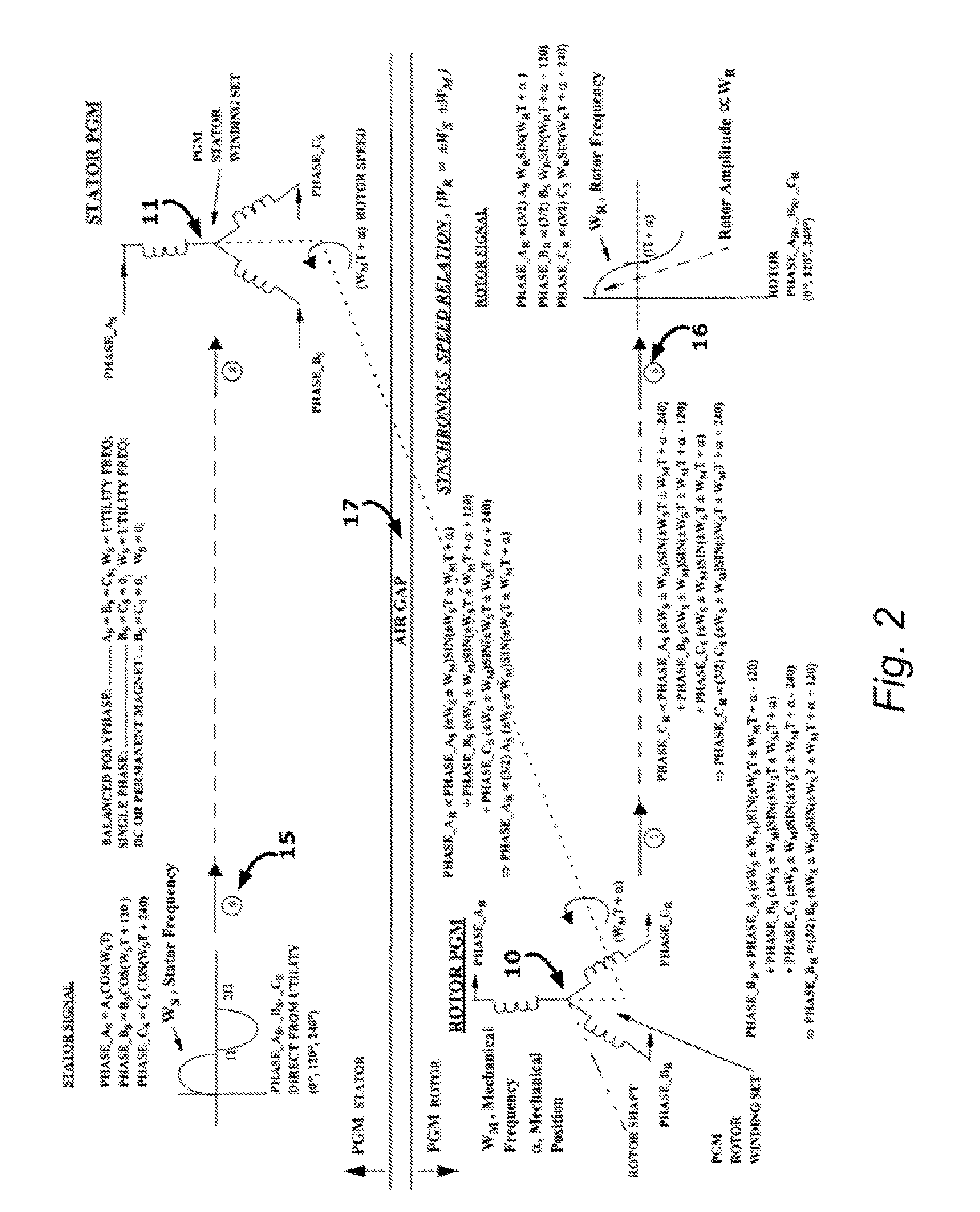Brushless Multiphase Self-Commutation Control (or BMSCC) And Related Inventions
a multi-phase, self-commutation control technology, applied in the direction of motor/generator/converter stopper, dynamo-electric converter control, etc., can solve the problems of direct application of high-frequency synthesized excitation waveform to the low frequency, inability to solve control asymptotically, and inability to estima
- Summary
- Abstract
- Description
- Claims
- Application Information
AI Technical Summary
Benefits of technology
Problems solved by technology
Method used
Image
Examples
Embodiment Construction
[0113]True Brushless Multiphase Self-Commutation Control (BMSCC) or Real Time Emulation Control (RTEC) is a contact-less means of propagating conditioned or re-fabricated electrical power between relatively isolated bodies while naturally inducing any potential mechanical speed or positional movement between the bodies onto the original electrical waveform by means of an Electro-magnetic Self-Commutator (i.e., electromagnetic computer or rotor excitation generator). True Brushless Multiphase Self-Commutation Control (BMSCC) is a new embodiment of a Rotor Excitation Generator (REG). A Rotor Excitation Generator is any device that provides Rotor Excitation Generation, which is synonymous with electromagnetic self-commutation. Previously, the only example of a REG was a component associated with the Electric Rotating Apparatus and Electric Machine patents of this inventor (U.S. Pat. No. 4,459,530, U.S. Pat. No. 4,634,950, U.S. Pat. No. 5,237,255, and U.S. Pat. No. 5,243,268). BMSCC pro...
PUM
 Login to View More
Login to View More Abstract
Description
Claims
Application Information
 Login to View More
Login to View More - R&D
- Intellectual Property
- Life Sciences
- Materials
- Tech Scout
- Unparalleled Data Quality
- Higher Quality Content
- 60% Fewer Hallucinations
Browse by: Latest US Patents, China's latest patents, Technical Efficacy Thesaurus, Application Domain, Technology Topic, Popular Technical Reports.
© 2025 PatSnap. All rights reserved.Legal|Privacy policy|Modern Slavery Act Transparency Statement|Sitemap|About US| Contact US: help@patsnap.com



